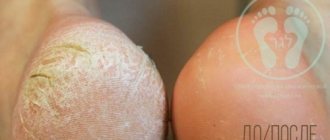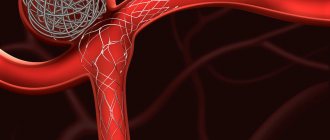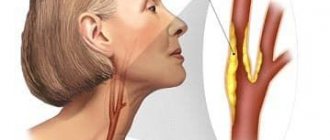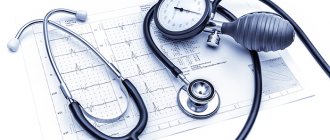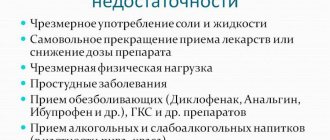What is a cardiac aneurysm in a newborn?
Cardiac aneurysm in newborns belongs to the so-called MARS syndrome. It stands for “minor anomalies of cardiac development.” The term itself indicates that such a pathology is not a gross malformation requiring immediate surgical intervention due to a threat to the baby’s life. An aneurysm is accompanied by some thinning and bulging of the myocardium in the area of the septum, which is located between the atria. However, this does not affect the quality of blood circulation, the provision of tissues and organs with oxygen and nutrients.
With an aneurysm in children, psychomotor and physical development is not impaired. The baby does not lag behind his peers, feels good and you can never tell that there is something wrong with his heart. However, it is imperative to monitor the child and periodically examine him so that the development of dangerous complications can be noticed in time and prevented.
Symptoms of aneurysms
Often aneurysms do not manifest themselves for many years. A person does not suspect that he has a “time bomb” inside him that can explode at any moment. Often symptoms are ignored until they become more severe. The main manifestations of an aortic aneurysm:
- pain in the chest and abdomen of a diffuse nature without a specific localization;
- pressing pain in the heart area caused by compression of the coronary vessels;
- attacks of shortness of breath and dizziness;
- superior vena cava syndrome (when it is compressed) includes cyanosis, swelling of the face, neck, and arms;
- signs of compression of the esophagus (impaired swallowing), trachea and bronchi (difficulty breathing, frequent pneumonia), rotary laryngeal nerves (hoarseness), vagus nerve (decreased heart rate);
- nausea, vomiting, feeling of heaviness in the stomach;
- palpable pulsating formation in the upper abdomen.
Cerebral aneurysms occur without typical symptoms. A person can only be bothered by frequent headaches.
Why pathology may occur
Scientists have still not come to a consensus on why a child’s heart aneurysm develops. Although such a developmental anomaly is not new in medicine. Scientists have known about this pathology for a long time, but due to insufficient diagnostic capabilities, it was detected much later, when the process of various kinds of complications began. Today everything has changed. Doctors can make a preliminary diagnosis at the stage of intrauterine development, and then confirm or refute it using ultrasound when the child is born.
A cardiac aneurysm in a child is considered a fairly rare structural disorder. According to scientists from the Yaroslavl State Medical Academy, it is observed in 2.5% of full-term newborns. It is distinguished from severe heart defects by the minimality of the defect, the absence of disturbances in the contractility of the organ, the closure of the heart valves and the flow of blood through the vessels.
Scientists have been closely studying MARS syndrome for more than 35 years and cannot yet accurately predict what problems such a disorder may result in in each specific case, whether it threatens the future life of the baby or will not manifest itself in any way.
Diagnosis of aneurysms
In some cases, pathology can be suspected when examined by a doctor. Next, a series of studies are prescribed to find the problem and assess its scale:
- chest x-ray;
- Ultrasound of the heart, Dopplerography of the thoracic and abdominal aorta, neurosonography;
- CT scan;
- angiography ー X-ray examination with preliminary introduction of a contrast agent into the vessel.
Symptoms of cardiac aneurysm in a newborn
In most cases, aneurysm in children does not cause severe hemodynamic disturbances, and therefore is mostly asymptomatic. Often, a baby is diagnosed during a routine ultrasound of the heart, or by chance, while examining him for another disease. Less commonly observed clinical signs include:
- heart rhythm disturbances, for example tachycardia;
- lethargy;
- increased excitability;
- poor sleep;
- cyanosis of the skin;
- retardation in physical development at a later age.
Aneurysm development
Many parents want to learn in more detail about what it is - an aneurysm of the interatrial septum in a newborn, and how it affects the functioning of the main “motor” of the body. To understand this, you need to look into the structure of the heart. Most internal organs of the human body have a framework of connective tissue. Its formation occurs during intrauterine development. It is thanks to connective tissue that the organ acquires its characteristic shape, does not bend or stretch, maintaining its functionality. Not only the frame, but also the heart valves, endowed with elasticity and a high margin of safety, are made of connective tissue fibers.
Connective tissue is involved in the formation of large “highways” extending from the heart - the aorta, pulmonary veins, and pulmonary trunk. The prerequisites for the occurrence of MARS syndrome are connective tissue dysplasia and changes in its structure. As a result, in one place the fibers are formed too thin and easily stretchable, and in another – hard and coarse. This leads to the appearance of minor anatomical defects, which include aneurysm in children. Scientists see the reason in a decrease in the concentration of certain types of fibrillar proteins or a violation of their proportions, which changes the structure of connective tissue.
Heredity plays a big role in this, as well as external unfavorable factors. The bad habits of the expectant mother and the infections she has suffered can also make a negative contribution to this process.
Danger signs
An aneurysm of the left ventricle of the heart with an uncomplicated course may not manifest itself in any way. Very often the defect is discovered only during research.
At the site of an aneurysm, a hole appears on the septum, which disrupts blood flow through the vessels and arteries. Each systolic contraction leads to blood entering not only the left ventricle, but also partially into the right. This, in turn, leads to an increase in the load on the right atrium, where compensatory hypertrophy begins to develop over time. Gradually it affects the entire ventricle.
An aneurysm of the interventricular septum of the heart provokes the release of a large volume of blood into the lungs, which leads to an increase in the load on the vessels and the appearance of symptoms of pulmonary hypertension.
With this disease, young patients may experience the following symptoms:
- Shortness of breath, which causes the development of asthma and pulmonary edema.
- Painful sensations in the chest, which have a pulling, aching character.
- Periodic chest pain. This symptom should prompt immediate medical attention.
- Fatigue, weakness. Children constantly want to rest, lie down, they do not have the energy to play or do ordinary things.
- In newborns, a symptom of the disease is frequent regurgitation, which occurs due to protrusion of the heart vessel onto the gastrointestinal tract.
- The child sweats heavily even when in a cool room.
- Headache. This symptom is observed in older children during sports or active games.
Dangerous signs that should alert a parent and prompt them to call an ambulance include:
- sudden change in skin color - from pale to bluish;
- severe cough with blood;
- bulging veins in the neck;
- severe vomiting, accompanied by blood clots;
- sudden loss of consciousness.
All these dangerous symptoms may indicate a ruptured aneurysm, which in most cases leads to heart failure and rapid death.
Types of aneurysm in newborns
Cardiologists consider each anomaly in the structure of the heart from a variety of angles, taking into account its occurrence - congenital or acquired, the degree of circulatory disturbance, anatomy of the defect, the presence of complications, etc. In most cases of cardiac aneurysm in a child, intussusception into the right ventricle is observed, and the atrial septum can bulge into any side or in the shape of the letter “S”.
When making a diagnosis, the doctor does not rely on the direction of the aneurysm, but on the size of the protrusion. Even a slight deviation from the norm becomes the basis for making a diagnosis not of MARS syndromes, but of severe heart defects. Concomitant pathologies of the main “motor” of the body, problems with hemodynamics, etc. are of great importance.
complication
Many parents are afraid that their child's heart aneurysm will simply rupture. However, in most cases their fears are completely unfounded. This pathology does not pose a serious threat to its carrier, but in some cases there is still a risk of progression of negative consequences. The most common complications of this structural disorder include:
- Increased or decreased heart rate.
- Rupture of a protrusion that occurred during intrauterine development. It occurs rarely and leads to a sharp deterioration in intracardiac hemodynamics.
- Decreased blood pressure – hypotension.
- Heart failure.
- Circulatory failure.
- Increased risk of developing endocarditis, thromboembolism, etc.
- An abnormality in the structure of the septum makes it vulnerable to bacterial infections.
Treatment
Treatment of an aneurysm is prescribed by a pediatric cardiologist on a case-by-case basis. If the size of the anomaly in the structure of the septum does not exceed 10 mm, then the pathology is not treated. The patient is registered at the dispensary and parents are advised to undergo regular medical examinations, have ultrasound scans at the required intervals, etc. If the size of the pathology exceeds 10 mm, the child has a delay in physical development, he often suffers from colds, then it makes sense to be examined more fully and receive recommendations regarding myocardial support and correction of complications.
Treatment tactics are selected in each specific case depending on the degree of decompensation, age, gender, weight, the presence of concomitant diseases and other factors. Treatment is prescribed in a comprehensive manner, including medications to prevent complications, improve heart function, enhance immunity, etc. Folk remedies are also included in the treatment of aneurysms in children, but before using them, you must consult a specialist.
Pills
Here are the drugs prescribed for the treatment of STD aneurysm:
- Anticoagulants and antiplatelet agents - Dicumarin, Warfarin, Phenilin.
- Antioxidant drugs - Akrimex, Astrox, Laprot.
- Vitamin supplements with magnesium and potassium to support heart muscle function.
- Antiarrhythmics with a membrane-stabilizing effect - “Bisoprolol”, “Propranolol”, “Timolol”.
- Stimulating the functioning of the immune system - “Bronchomunal”, “Viferon”, “Genferon”.
Hypotension due to an aneurysm usually does not require medication. The doctor may recommend increasing blood pressure with food - coffee, green tea, beet juice, nuts, apricots, pomegranates, etc. For bacterial carditis, antibiotics are prescribed according to a special regimen.
Surgical intervention
Typically, surgical correction of an aneurysm of the sac in children is not performed. The patient is carefully monitored, and if there is surgery, it will definitely be prescribed. Surgery requires serious indications, including the presence of concomitant anomalies of cardiac development. Before agreeing to such an intervention, it makes sense to consult several doctors at once, and only then make a decision.
Folk remedies
Traditional therapy for aneurysm involves taking decoctions and infusions of medicinal herbs. It often happens that they are traditional medicines, but you should first consult your doctor.
Herbalists recommend taking these herbs:
- Valerian root. Used as a sedative and antispasmodic. Dilates coronary vessels, excitability, eliminates insomnia. However, it is contraindicated if there is a tendency to thrombus formation, and it can provoke tachycardia.
- St. John's wort. This herb increases blood pressure, has a tonic and antimicrobial effect, and is also an antidepressant and is used for anxiety disorders. St. John's wort can help with fatigue syndrome and persistent headaches.
- Motherwort. It has long been actively used in medicine for various heart diseases. It is an excellent sedative and is used in the treatment of thrombosis, epilepsy, and hypotension.
- Hawthorn berries. Another heart remedy that has been used for medicinal purposes since the times. This helps with hypertension, as well as mental disorders, migraines, and epilepsy.
- Calamus root. The root of the marsh calamus contains substances that have a calming effect on the central nervous system, tone the heart, strengthen blood vessels, and improve brain function. It is an excellent antispasmodic with bacteriostatic and anti-inflammatory properties.
Forecast
To prevent the disease from progressing to a more severe form, your baby should be regularly examined by a local pediatrician and cardiologist. It is also necessary to periodically do an ultrasound and perform an ECG. Such measures will allow you to monitor the dynamics of the disease and take timely actions to minimize possible complications.
In general, the prognosis for such an anomaly is favorable. The pathology does not affect the baby’s development and rarely causes discomfort. Aneurysm rupture is diagnosed in 10% of patients. Moreover, the survival rate after the operation is about 80%.
Many parents who are faced with this problem are concerned about their child’s attendance at physical education classes and sports clubs. Permission for this type of training must be given by a cardiologist. The specialist makes a decision based on the examination results, taking into account the size of the anomaly and accompanying changes in the functioning of the heart.
Prevention is relevant only at the time of planning and bearing a child. The expectant mother must monitor her health, undergo the necessary examinations and take appropriate tests to detect infections. This should be taken especially seriously by those who have relatives suffering from heart disease. During pregnancy, it is important to undergo fetal ultrasound several times. You also need to forget about bad habits such as smoking and drinking alcoholic beverages. In the first trimester, you should do everything possible to avoid infectious diseases (ARVI or influenza). To do this, it is important to eat right, take a walk every day, and minimize the time you spend in crowded places.
Prevention of cardiac aneurysm in newborns
Thanks to the active promotion of a healthy lifestyle in the country and in the world, the introduction of the practice of preparing for pregnancy and childbirth, more and more expectant parents are thinking about the health of their children. Many couples begin to prepare for conception in advance, take multivitamins, switch to proper nutrition, and give up drinking alcohol and cigarettes. This is the main prevention of intrauterine developmental anomalies, including aneurysm of the bladder.
People with a hereditary predisposition should take even more care of their health. It makes sense to visit a doctor and consult with him about how you can prevent the development of cardiac structural disorders. Remembering that infections suffered during pregnancy, and especially in the first trimester, can cause similar problems in future offspring, it is necessary to think about their prevention. It involves dressing appropriately for the weather, especially shoes. If your feet get cold or wet in wet weather, then a cold cannot be avoided.
In the era of the coronavirus pandemic, it is better to refuse any trips, avoid crowded places, try to go shopping less often, and if the need arises, be sure to wear a medical mask and change it in a timely manner. The same applies to those women who continue to work and meet people before receiving sick leave. It is also recommended to cure all existing acute and chronic diseases at the pregnancy planning stage, so that later you do not have to choose between the baby’s health and your own. The thing is that most traditional medications can adversely affect the development of the fetus and lead to the formation of various anomalies.
It often happens that a woman takes medication without yet knowing about her “interesting” situation. But it is in the first trimester that the formation of the main organs and systems of the baby, its heart, occurs. That is why it is so important to eliminate all the shortcomings of your health. And regarding chronic diseases, consult with your doctor and decide which medications you can keep, which ones it is better to abandon altogether or replace with safer ones.
Diagnosis and treatment of arterial aneurysms in Medical
When should you see a doctor?
You should contact a cardiologist or cardiovascular surgeon if:
- the attending physician suspects an aneurysm;
- during an examination for another reason, a pathological dilatation of the artery was discovered;
- there are characteristic symptoms.
There are two tactics for managing patients: dynamic observation (for small sizes, asymptomatic course, minimal risk of complications), surgical treatment.
Observation is carried out under x-ray control. To reduce the risk of possible complications, antihypertensive and anticoagulant therapy and cholesterol reduction are carried out.



